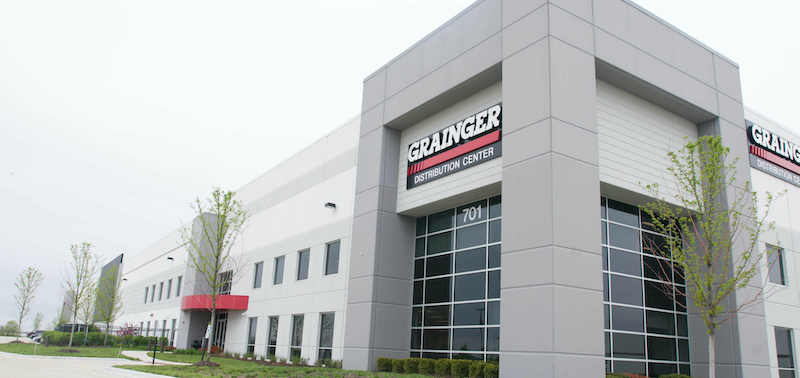The operational challenges presented by COVID-19 greatly tested the wholesale distribution industry. From planning & forecasting to transportation & logistics, distributors overcame a lot of obstacles as they faced unprecedented swings in both supply and demand.
One of the most affected areas that all distributors had to deal with was warehouse operations. Perhaps no sector was tested as much as healthcare. Even before the COVID-19 crisis, healthcare distributors were handling 92% of pharmaceutical sales, and they continue to play a pivotal role. Security challenges at healthcare distribution centers vary but some of the most common are:
- unsecured pathways
- theft
- unauthorized access
- poor lighting
- lack of security awareness
While most distributors, regardless of their industry, agree on the need to review and improve their security posture, they may not always have the budget or time to implement effective changes. Here are eight cost-effective ways that distribution centers can improve their warehouse physical security:
1-Conduct an assessment
The value of a site assessment can not be overstated. Ideally, you want to consult with a reputable security company that can guide you through the process to optimize your security setup. Still, a basic in-house security assessment is a prudent way for you to obtain valuable insights into the state of your warehouse security. A couple of practical steps you can take to accomplish this include:
- Ensure your current security measures, such as your perimeter fencing, access control points and intercom, are working optimally.
- Document any areas that need attention and make an action plan to resolve the issues.
2-Audit your current security camera system
Surveillance cameras play an integral role in the security posture of a warehouse. They help to ensure safety protocols are always in place, and let staff quickly respond in case of accidents or injuries.
- Make sure to check the functionality of the system. You want to know if everything is working properly.
- Conduct a system performance check. This requires that you check the location, coverage and effectiveness of each camera.
3-Review your video management software
Your video surveillance system is only as helpful as the incidents you can actually capture and analyze. After conducting an assessment and reviewing your security camera system, you want to make sure that your video management software is able to provide you with:
- Real-time video footage that provides you with the analytics you need to keep operations running smoothly.
- Multi-site access if you are managing multiple sites. The ability to have a centralized hub is a force multiplier for distributors managing different locations.
4-Focus on access control system
Video surveillance is important but having an extensive record of who enters and leaves your site is crucial. At the center of your warehouse’s physical security setup is the access control system. Along with managing approved visitors and daily entry procedures you should:
- Test weak entry points, especially fire exits and areas you may not visit frequently, such as roof hatches.
- If you are still using keys, consider transitioning to an RFID-based system that provides you with smart cards or key fobs instead.
5-Test your intercom system
A warehouse intercom system enables your personnel to communicate effectively and perform other important access control functions. Conducting an intercom review does not cost you anything, but discovering areas where you need additional coverage could save you a lot of trouble. As you evaluate your intercom system you may want to consider:
- Identifying areas where you want to communicate with staff and visitors.
- Upgrading to a cloud-based video intercom system. These systems are likely to become the new standard and they do much more than simply make announcements and open doors.
6-Importance of proper signage
In the age of social distancing and extensive safety protocols, safety signs and visual aids have become more important than ever. They are an instrumental part of your overall communication. At a minimum, your warehouse signage should:
- Direct everyone toward safe access and egress paths.
- Point out locations of safety equipment and rally points.
7-Parking lot security
The parking lot is one of the highest security and safety risk areas for most warehouses. While parking lot cameras improve the overall security posture by capturing video evidence, there are practical actions you can take to prevent incidents:
- Audit your parking lot and try to identify private areas and spots that offer hiding places for criminals.
- Consider physical security upgrades, such as access control, multisensor cameras that provide a 360-degree view and additional lighting.
8-Safety-first environment
Clear and regular communication contributes significantly to the safety and security of a warehouse. Creating a safety-first culture where managers lead by example definitely impacts the effectiveness of your physical security setup. While this is an ongoing process, you may want to consider:
- Having a daily protocol that includes a safety briefing, collecting safety equipment, and checking all necessary equipment.
- Using your video surveillance to make sure employees are following safety protocols and rewarding them for their safe behavior.
In this new environment, distributors are looking at the world through a new set of safety lenses. By reviewing their warehouse in a detailed manner, distributors can find practical and effective ways to improve their current security setup.
Patrick Chown is president of Safe and Sound Security.
Related Posts
-
Industrial distributor appoints Julie Myerholtz to lead the company's cybersecurity vision and strategy.
-
Chuck Noll and Michelle Kelly receive promotions as part of Turtle & Hughes reorganizing its…
-
Texas distribution center allows distributor to practice what they preach on automation excellence. To access…





